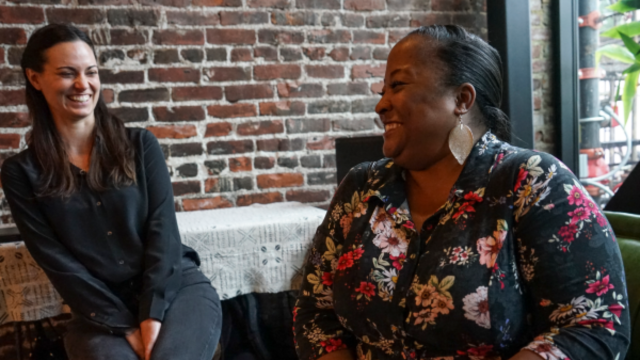
On a recent trip to Anchorage, after engaging with local philanthropic leaders and learning about Alaska’s unique attributes and challenges, it dawned on me the many lessons funders in the lower 48 can glean from Alaska’s philanthropic leaders. In a geographically large state with a small population, funders wear multiple hats and coordinate easily across organizations to address formidable challenges – including homelessness, lack of affordable housing and healthcare services, access to high-quality P-16 education, workforce development and much, much more.
From this recent visit and in my role with Philanthropy Northwest over the past year, I’d like to share my observations about the unique positioning of philanthropy in Alaska:
1) Alaska’s economic landscape is unique.
In striking contrast to the rest of the country, Alaska faces, at times, a drastically different economic landscape. When cities and states across the country slogged through tough economic times 10 years ago, Alaska weathered the Great Recession relatively well. Now, as most of the country enjoys a period of modest growth, Alaska is experiencing its third year of an economic downturn. As a result, Alaska’s social service and nonprofit sectors bore part of the brunt of significant government budget cuts. And despite economic downturns or periods of growth, funders’ programmatic investments must always take into account unique challenges in rural Alaska, where the cost of living is higher due to transportation costs, and the cost of imported goods and materials, among other things.
These unique economic variables attracted the attention of the Chan Zuckerberg Initiative (CZI) and the Rockefeller Foundation. Staff from both organizations recently visited Anchorage, one of 11 cities on their tour, to better understand how unique state conditions impact economic vitality and mobility to inform future grantmaking. In a recent development, the state announced last month its plans to partner with the national non-profit EducationSuperHighway to launch its K-12 Broadband Initiative. This effort to bring broadband access to all K-12 schools across the country is supported by multiple funders, including CZI, the Ford Foundation and the Bill & Melinda Gates Foundation.
2) Alaska is ideal for many pilot projects.
Despite some of these unique challenges, funders in Alaska will point out that the state is ripe for innovation and scale, where projects and ideas can be piloted for replication in other parts of the country. You have an ecosystem where politicians are accessible and know their constituents and local leaders by name. Key organizations readily collaborate in order to leverage government and private investments, allowing projects to easily scale. For example, there are only about 55,000 children under the age of 5 in Alaska. Despite the fact that the state is so large with many communities accessible only by airplane, the number of children is small and real change can happen. Early education funders can test and refine Pre-K initiatives to achieve full enrollment in a state like Alaska, and then implement them in other states.
3) Native Communities must be a key focus in Northwest philanthropic efforts.
Our trip to Alaska culminated in the launch of the discovery phase of our next Native Giving report to be released mid-2019 – with Alaska as the first state on our itinerary. Our writer, Christine Dupres (Cowlitz/Cree), met with Native leaders and convened Alaska Native education foundations and other organizations to gather data and perspectives on current successes, challenges and goals. We walked away with a clear mandate to ensure Alaska Natives are a key focus of the report.
Philanthropy Northwest looks forward to further raising the visibility of this state, especially given its unique network of tribes, villages and corporations. For example, Alaska’s Indigenous Peoples comprise about 20% of the Alaskan population. These data, and resulting shifts in demographics, are critically important to document, and a key focus of our Alaska funders’ discussion on the upcoming decennial census. Census counts directly impact resources for communities. The rural and Alaska Native communities are at higher risk for not being fully counted due to low mail return rates in the last census and lack of internet access in rural areas. Opportunities to get involved include:
- Establishing a pooled fund, and/or funding your current grantees around their census work. Trusted messengers in communities make a significant difference!
- Arranging for access to technical assistance, internet and materials, as Census 2020 will be partially administered on line for the first time.
- Joining the Foraker Group’s Alaska Census Working Group.
- Joining or supporting Complete Count Committees.
Historically, Alaska Native giving is often left out of philanthropic reports. Philanthropy Northwest’s mission to honor past, place and people situates our work at an important nexus – to elevate efforts by and for Indigenous people. We aim to center this community in future reports and efforts, like the Native Giving Report.
No doubt, our trip to Alaska left a profound impression on me. I am more deeply committed to ensuring that Philanthropy Northwest makes a sustained effort to meaningfully support the State of Alaska, its leaders and its Native communities.


